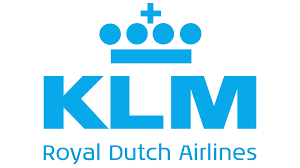Popular Hotels in France
Grand-Hotel du Cap-Ferrat, A Four Seasons Hotel
France
$650Grand-Hôtel du Cap-Ferrat, A Four Seasons Hotel, is a prestigious luxury hotel situated on the French Riviera's Saint-Jean-Cap-Ferrat peninsula. Set amidst 7 hectares of Mediterranean gardens, the hotel offers panoramic views of the Mediterranean Sea and has been an iconic resort for over a century. Grand-Hôtel du Cap-Ferrat, A Four Seasons Hotel, is a prestigious luxury hotel situated on the French Riviera's Saint-Jean-Cap-Ferrat peninsula. Set amidst 7 hectares of Mediterranean gardens, the hotel offers panoramic views of the Mediterranean Sea and has been an iconic resort for over a century.Accommodations:The hotel features 74 elegant rooms and suites, each designed to provide comfort and luxury. Guests can choose between accommodations in the historic Heritage Building, offering sea views from Nice to Monaco, or in Les Terrasses du Cap, nestled within lush gardens.DiningGuests can indulge in exquisite dining experiences at the hotel's three restaurants, each offering a unique culinary journey:Le Cap: A Michelin-starred restaurant serving Mediterranean cuisine in an elegant setting.La Véranda: Offers a relaxed atmosphere with a menu featuring regional specialties and international dishes.Club Dauphin: Located by the infinity pool, this restaurant provides a casual dining experience with stunning sea views.Amenities:The hotel boasts a range of luxurious amenities, including: Spa: A state-of-the-art spa offering various treatments and therapies for relaxation and rejuvenation. Infinity Pool: A renowned infinity pool providing breathtaking views of the Mediterranean Sea. Fitness Center: Equipped with modern facilities for guests' fitness needs.Location:Situated at the tip of Cap-Ferrat, the hotel offers a serene retreat while being conveniently located near the vibrant cities of Nice and Monaco. Guests can explore the picturesque surroundings, including nearby beaches, cultural sites, and upscale shopping districts. Accommodations:The hotel features 74 elegant rooms and suites, each designed to provide comfort and luxury. Guests can choose between accommodations in the historic Heritage Building, offering sea views from Nice to Monaco, or in Les Terrasses du Cap, nestled within lush gardens.DiningGuests can indulge in exquisite dining experiences at the hotel's three restaurants, each offering a unique culinary journey:Le Cap: A Michelin-starred restaurant serving Mediterranean cuisine in an elegant setting.La Véranda: Offers a relaxed atmosphere with a menu featuring regional specialties and international dishes.Club Dauphin: Located by the infinity pool, this restaurant provides a casual dining experience with stunning sea views.Amenities:The hotel boasts a range of luxurious amenities, including: Spa: A state-of-the-art spa offering various treatments and therapies for relaxation and rejuvenation. Infinity Pool: A renowned infinity pool providing breathtaking views of the Mediterranean Sea. Fitness Center: Equipped with modern facilities for guests' fitness needs.Location:Situated at the tip of Cap-Ferrat, the hotel offers a serene retreat while being conveniently located near the vibrant cities of Nice and Monaco. Guests can explore the picturesque surroundings, including nearby beaches, cultural sites, and upscale shopping districts.
Book NowAirelles Château de Versailles, Le Grand Contrôle
France
$190Airelles Château de Versailles, Le Grand Contrôle is a luxurious hotel located within the grounds of the Palace of Versailles, offering guests an unparalleled experience steeped in history and opulence. Accommodations:The hotel features 11 meticulously restored rooms and two signature suites, each adorned with period furnishings and fabrics by Maison Pierre Frey, reflecting the grandeur of 18th-century French decor. Guests can enjoy views of the Château de Versailles or the Orangerie from their rooms.Dining:Under the culinary direction of Chef Alain Ducasse, the hotel's restaurant offers an immersive dining experience inspired by royal feasts, blending traditional French cuisine with contemporary flair. The dining area, bathed in natural light by day and candlelight by night, provides an intimate and regal atmosphere.Amenities:Guests can indulge in a range of amenities, including a luxurious spa by Valmont, offering treatments designed to rejuvenate and relax. The hotel also provides exclusive access to the Palace of Versailles, allowing guests to explore the historic site in a unique and personalized manner.
Book NowFour Seasons Hotel George V, Paris
France
$750The Four Seasons Hotel George V, nestled in Paris's prestigious Golden Triangle just off the historic Champs-Élysées, is an iconic Art Deco landmark that has epitomized luxury since its opening in 1928. Accommodations:The hotel boasts 244 rooms, including 59 suites, many offering private terraces with commanding views of Paris's skyline, including the Eiffel Tower. Each room harmoniously blends classic Parisian elegance with modern amenities, ensuring guests experience unparalleled comfort.Dining:Culinary excellence is a hallmark of the George V, with its three restaurants collectively holding six Michelin stars:Le Cinq: A three-Michelin-starred restaurant renowned for its innovative French cuisine and an extensive wine cellar.Le George: A one-Michelin-starred Mediterranean-inspired restaurant offering light and modern dishes designed for sharing.L'Orangerie: Also boasting one Michelin star, this restaurant presents contemporary French cuisine in a serene setting.Amenities:Guests can indulge in a range of luxurious amenities, including a spa, an indoor pool, and a state-of-the-art fitness center. The hotel's elegant event spaces also make it a sought-after venue for weddings, conferences, and private functions.Accessibility:The George V is committed to inclusivity, offering accessible rooms and facilities to ensure a comfortable stay for all guests.Location:Situated at 31 Avenue George V, Paris, France 75008, the hotel places guests within walking distance of luxury shopping districts, renowned museums, and iconic landmarks, making it an ideal base for exploring the City of Light.
Book NowL'Auberge du Père Bise
France
$850L'Auberge du Père Bise - Jean Sulpice is a distinguished five-star hotel and gastronomic destination nestled on the picturesque shores of Lake Annecy in Talloires, France. Established in 1903 by Marie and François "Le Père" Bise, the establishment began as a modest lakeside café and has evolved over the decades into a renowned haven of hospitality and culinary excellence. Accommodations: The hotel offers 23 elegantly appointed rooms and suites, each thoughtfully designed to blend contemporary comfort with timeless charm. Guests can enjoy breathtaking views of Lake Annecy and the surrounding alpine landscape, providing a serene and luxurious retreat.Wellness and Amenities: For those seeking relaxation, the hotel's spa provides a range of treatments designed to rejuvenate the body and mind. The tranquil setting, combined with the natural beauty of the surroundings, creates an ideal environment for rest and rejuvenation.Location: Situated in the bay of Talloires, L'Auberge du Père Bise offers guests direct access to the crystal-clear waters of Lake Annecy. The location is perfect for various outdoor activities, including boating, hiking, and cycling, allowing guests to immerse themselves in the natural splendor of the region.
Book NowRitz Paris
France
$350The Ritz Paris, established in 1898, is an iconic luxury hotel located at 15 Place Vendôme in the 1st arrondissement of Paris. Renowned for its historic grandeur and exceptional service, the hotel has been a symbol of elegance and sophistication for over a century.Accommodations:The hotel offers 71 rooms and 71 suites, each meticulously designed to blend classic French decor with modern amenities. Guests can expect opulent furnishings, spacious layouts, and state-of-the-art facilities that ensure a comfortable and luxurious stay. Dining:L'Espadon: A Michelin-starred restaurant offering exquisite French cuisine in an elegant setting.Bar Vendôme: A stylish brasserie serving classic French dishes in a relaxed atmosphere. Salon Proust: An intimate lounge perfect for afternoon tea, featuring a selection of fine pastries and teas.Bar Hemingway: A legendary bar known for its extensive cocktail menu and historic ambiance, frequented by the famed writer Ernest Hemingway.Amenities: Guests can indulge in a range of luxurious amenities, including: Ritz Club & Spa: Featuring a stunning indoor pool, fitness center, and exclusive treatments using products from the renowned beauty brand Biologique Recherche. École Ritz Escoffier: A cooking school offering culinary classes for both amateurs and professionals, honoring the legacy of the legendary chef Auguste Escoffier.Location: Situated in the heart of Paris, the Ritz Paris provides easy access to several major attractions: Louvre Museum: A short walk from the hotel, guests can explore one of the world's largest and most renowned art museums. Jardin des Tuileries: Adjacent to the Louvre, this historic garden offers a serene escape with beautifully manicured landscapes. Opéra Garnier: A nearby architectural masterpiece, hosting world-class opera and ballet performances.
Book NowHotel Barrière Le Majestic Cannes
France
$280Hôtel Barrière Le Majestic Cannes is a prestigious five-star hotel located on the famed Boulevard de la Croisette in Cannes, France. Established in 1926, this historic hotel epitomizes French elegance and sophistication, offering guests panoramic views of the Mediterranean Sea and proximity to the Palais des Festivals. Accommodations:The hotel features 305 rooms, including 23 suites, each designed to provide luxury and comfort. Many rooms offer balconies with stunning sea views, allowing guests to enjoy the beauty of the Mediterranean from the privacy of their accommodations.Dining:Le Fouquet's Cannes: A luxurious brasserie offering a menu that blends traditional French cuisine with contemporary flavors.La Petite Maison de Nicole: Serving Mediterranean-inspired dishes in a vibrant atmosphere, this restaurant is known for its fresh ingredients and flavorful creations.BFire by Mauro Colagreco: Located on the private beach, this restaurant offers a unique dining experience with a menu crafted by the renowned chef Mauro Colagreco.
Book NowParis Marriott Champs Elysees Hotel
France
$650The Paris Marriott Champs Elysees Hotel is a five-star luxury property located on the renowned Avenue des Champs-Élysées in Paris. This prime location places guests within walking distance of iconic landmarks such as the Arc de Triomphe and the Seine River, as well as high-end shopping and dining venues. Accommodations: The hotel offers 192 elegantly designed rooms and suites, each equipped with amenities to ensure a comfortable stay. Select rooms provide views of the Champs-Élysées, enhancing the Parisian experience.Dining: Guests can enjoy dining at the hotel's on-site restaurants, including: Le Restaurant & Terrace: Offers a variety of culinary options in a refined setting. Bar Atrium: Provides a relaxed atmosphere for cocktails and light fare.Amenities: The hotel features a fitness center and sauna, providing guests with options for relaxation and exercise during their stay.
Book NowAirelles Château de Versailles, Le Grand Contrôle
France
$650Airelles Château de Versailles, Le Grand Contrôle, is a luxury hotel situated within the historic grounds of the Palace of Versailles, offering guests an unparalleled experience of French royal heritage. Accommodations:The hotel boasts 11 rooms and 2 signature suites, each thoughtfully restored to reflect the opulence of the era. Adorned with fabrics from Maison Pierre Frey and furnished with hand-picked antiques, the rooms offer views of the Palace of Versailles, the Orangerie, and the Pièce d’Eau des Suisses.Dining:Under the culinary direction of Chef Alain Ducasse, the hotel's restaurant provides an intimate dining experience inspired by royal feasts. Guests can indulge in menus that pay homage to the Sun King's opulent banquets, with dishes crafted from seasonal ingredients and presented with contemporary flair.
Book NowAirelles Château de Versailles, Le Grand Contrôle
France
$350Airelles Château de Versailles, Le Grand Contrôle, is a luxury hotel situated within the historic grounds of the Palace of Versailles, offering guests an unparalleled experience of French royal heritage. Accommodations:The hotel boasts 11 rooms and 2 signature suites, each thoughtfully restored to reflect the opulence of the era. Adorned with fabrics from Maison Pierre Frey and furnished with hand-picked antiques, the rooms offer views of the Palace of Versailles, the Orangerie, and the Pièce d’Eau des Suisses.Dining:Under the culinary direction of Chef Alain Ducasse, the hotel's restaurant provides an intimate dining experience inspired by royal feasts. Guests can indulge in menus that pay homage to the Sun King's opulent banquets, with dishes crafted from seasonal ingredients and presented with contemporary flair.
Book NowThe Ritz-Carlton, Wolfsburg
France
$400Grand-Hôtel du Cap-Ferrat, A Four Seasons Hotel, is a prestigious luxury hotel situated on the French Riviera's Saint-Jean-Cap-Ferrat peninsula. Set amidst 7 hectares of Mediterranean gardens, the hotel offers panoramic views of the Mediterranean Sea and has been an iconic resort for over a century. Accommodations:The hotel features 74 elegant rooms and suites, each designed to provide comfort and luxury. Guests can choose between accommodations in the historic Heritage Building, offering sea views from Nice to Monaco, or in Les Terrasses du Cap, nestled within lush gardens.DiningGuests can indulge in exquisite dining experiences at the hotel's three restaurants, each offering a unique culinary journey:Le Cap: A Michelin-starred restaurant serving Mediterranean cuisine in an elegant setting.La Véranda: Offers a relaxed atmosphere with a menu featuring regional specialties and international dishes.Club Dauphin: Located by the infinity pool, this restaurant provides a casual dining experience with stunning sea views.Amenities:The hotel boasts a range of luxurious amenities, including: Spa: A state-of-the-art spa offering various treatments and therapies for relaxation and rejuvenation. Infinity Pool: A renowned infinity pool providing breathtaking views of the Mediterranean Sea. Fitness Center: Equipped with modern facilities for guests' fitness needs.Location:Situated at the tip of Cap-Ferrat, the hotel offers a serene retreat while being conveniently located near the vibrant cities of Nice and Monaco. Guests can explore the picturesque surroundings, including nearby beaches, cultural sites, and upscale shopping districts.
Book Now
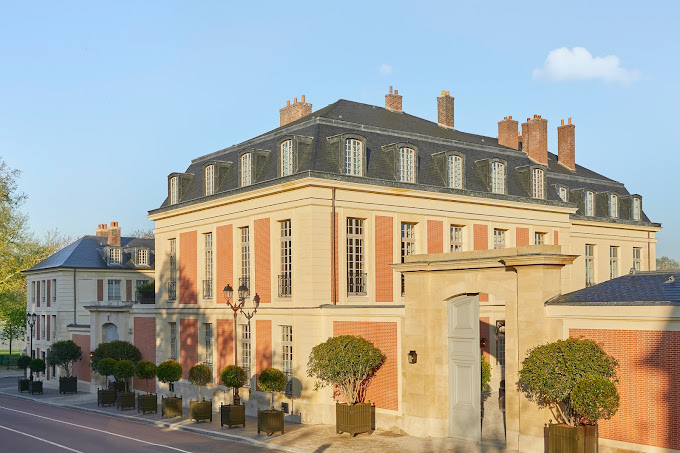
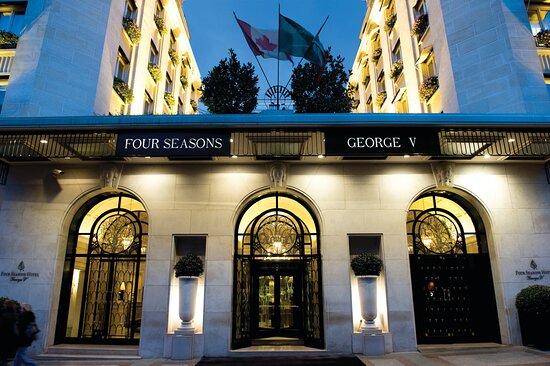
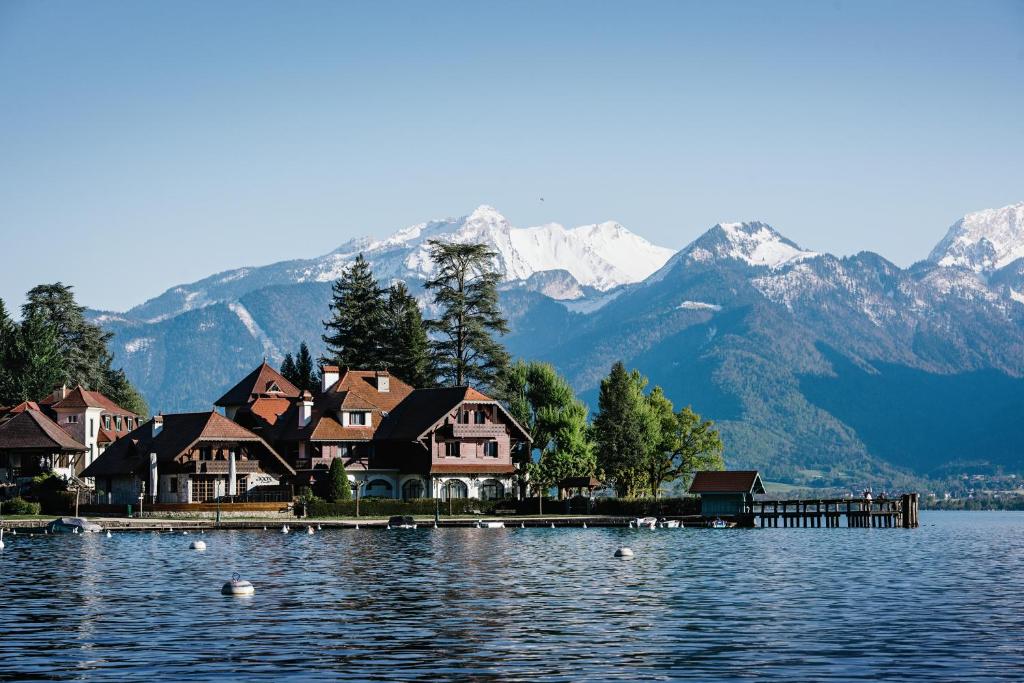

.jpeg)

.jpeg)
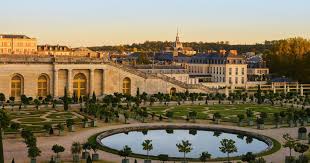


.jpeg)
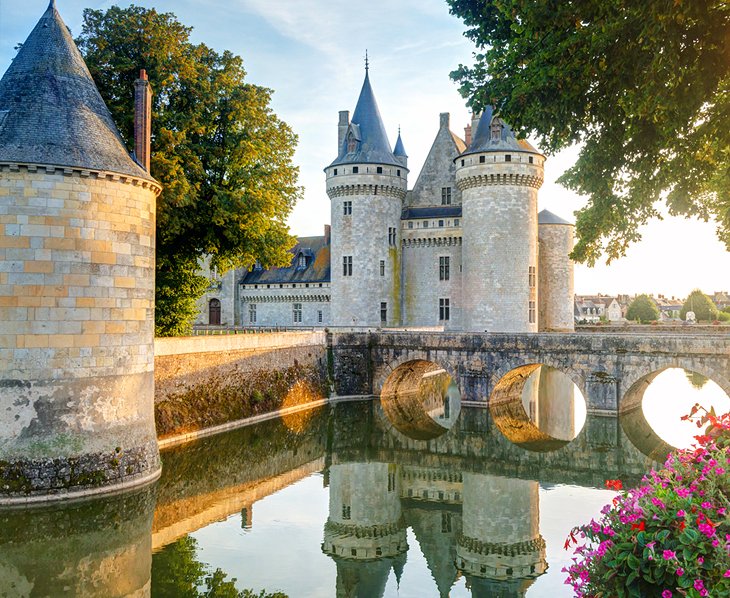
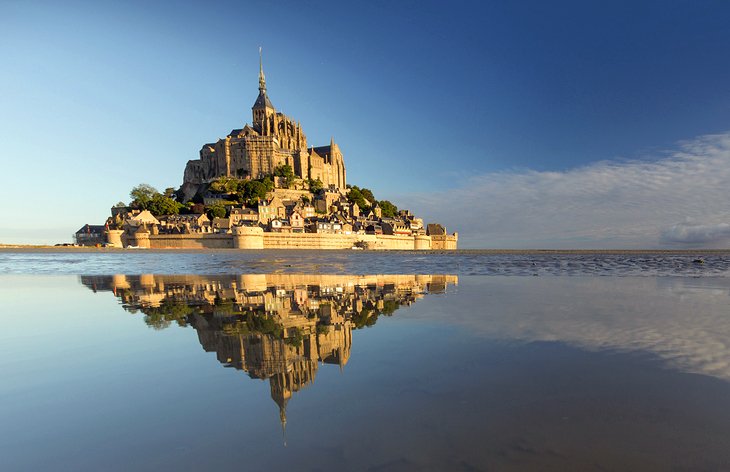
.jpeg)

















